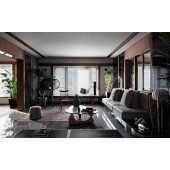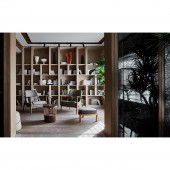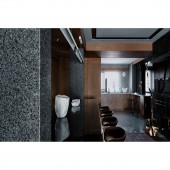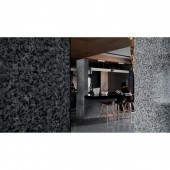Lane House Residental by Nolan Chao |
Home > Winners > #70574 |
 |
|
||||
| DESIGN DETAILS | |||||
| DESIGN NAME: Lane House PRIMARY FUNCTION: Residental INSPIRATION: For a fresh stereotype of home design, a way of living in "hutong" brought out the idea of lanes and possibilities in "loading", "uninstalling&q UNIQUE PROPERTIES / PROJECT DESCRIPTION: Based on this concept of "inside lanes", the designer tried many possibilities as in various decorations to realize and express the idea. The relationship between privacy and openness of the space is the focus of design, when the owners ask for privacy and isolation, they use grilles, curtains, but if they need more space, can abnegate them. The designer treated differently for types of rooms bodied with different functions, with which provided at least two or more "connections&qu OPERATION / FLOW / INTERACTION: located in the bustling area of the city center, an ordinary high-level integrated residential community with seven stories height of one elevator for one household plan, the neighborhood is quiet and nicely PROJECT DURATION AND LOCATION: Shifoying Road, Beijing, China FITS BEST INTO CATEGORY: Interior Space and Exhibition Design |
PRODUCTION / REALIZATION TECHNOLOGY: Provided with more pluralistic room and freedom to experience space association, the host has more opportunities to create ideal way of living while gain great convenience. The designer utilized stone, wood, metal and glass in its natural form with few construction methods to compatible with the interior and exterior to create gray space. The designer paid attention to ritual way of life by adjusting and optimizing this space to improve efficiency. SPECIFICATIONS / TECHNICAL PROPERTIES: Gross floor area (sqm): 200 Interior floor area (sqm): 160 TAGS: interior, design, architect, construction, lane, privacy, openness, loading, uninstalling RESEARCH ABSTRACT: People in the room can communicate directly with each other at any spot at any time. The central area is a functional corridor, but the rear corridor contains the most private space, which can be adjusted and blocked with windows, curtains or partition doors. For example, when the owner closes all wooden and mirror doors in the corridor, the place will have a strong boundary and a considerable distance from the outside world, leaving the owner with a very core and ceremonial clean area. At the same time, it takes variability of openness into consideration. CHALLENGE: One of the biggest challenges is “in which way people desire to live in here” and “the attitude towards the living space”. Throughout the work, he reduced interference of elements and techniques like colors and shapes so as to only focus on the ritual way of life. The owners can dine or work in the kitchen, bedroom, living room, or a table at any time to enjoy themselves, and these feelings will greatly enhance the owners’ perceptions, understandings and visual perceived efficiency of a day in this "expensive" ADDED DATE: 2018-09-06 12:39:12 TEAM MEMBERS (1) : Nolan Chao, Na Cheung IMAGE CREDITS: Image #1,2,3,4,5: Yunpu Cai Video: Yang Bo |
||||
| Visit the following page to learn more: http://www.arch-is-try.com | |||||
| AWARD DETAILS | |
 |
Lane House Residental by Nolan Chao is Winner in Interior Space and Exhibition Design Category, 2018 - 2019.· Read the interview with designer Nolan Chao for design Lane House here.· Press Members: Login or Register to request an exclusive interview with Nolan Chao. · Click here to register inorder to view the profile and other works by Nolan Chao. |
| SOCIAL |
| + Add to Likes / Favorites | Send to My Email | Comment | Testimonials | View Press-Release | Press Kit |
Did you like Nolan Chao's Interior Design?
You will most likely enjoy other award winning interior design as well.
Click here to view more Award Winning Interior Design.








